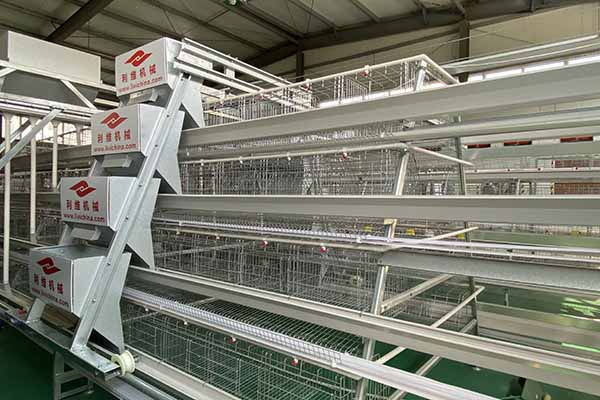Uganda Chicken Farm Automatic Ventilation System Installation Case Study
Time : 2025-04-26
In the heart of Uganda, a chicken farm has embarked on a modern transformation by installing an automatic ventilation system. This case study delves into the details of the installation process, the benefits, and the impact it has had on the farm’s productivity.
Introduction to the Uganda Chicken Farm
Nestled in the lush greenery of Uganda, the chicken farm, known as “Chickens of Uganda,” has been a staple in the local community for years. With a focus on sustainable farming practices, the farm has always been on the lookout for innovative solutions to enhance their operations. The installation of an automatic ventilation system was a significant step in this direction.
The Need for an Automatic Ventilation System
Chicken farming, like any other livestock venture, requires a controlled environment to ensure the health and well-being of the birds. Traditional ventilation methods, such as opening and closing windows manually, were not only time-consuming but also inconsistent. This inconsistency often led to issues like temperature fluctuations, high humidity, and poor air quality, which could negatively impact the chickens’ growth and overall health.
The Automatic Ventilation System
To address these challenges, the farm decided to invest in an automatic ventilation system. This system is designed to maintain optimal conditions within the chicken houses by automatically adjusting the airflow based on the temperature, humidity, and CO2 levels.
The Installation Process
The installation process was a collaborative effort between the farm’s management and the experts from the ventilation system provider. Here’s a step-by-step breakdown of how it was done:
1. Site Assessment: The first step was to assess the existing infrastructure and understand the farm’s specific needs. This included measuring the size of the chicken houses, the number of birds, and the climate of the region.
2. System Design: Based on the site assessment, the ventilation system was designed to ensure maximum efficiency and effectiveness. This involved selecting the right fans, dampers, and sensors.
3. Installation: The actual installation was carried out by skilled technicians who fitted the fans, dampers, and sensors in the chicken houses. They also ensured that the system was integrated with the farm’s existing control systems.
4. Testing and Calibration: Once the system was installed, it was tested to ensure that it was functioning correctly. The technicians calibrated the sensors and fans to ensure they were responding accurately to the environmental conditions.
5. Training: The farm’s staff were trained on how to operate and maintain the new system. This was crucial to ensure that the system would be used effectively and would remain in good working condition.
Benefits of the Automatic Ventilation System
The installation of the automatic ventilation system has brought several benefits to the farm:
– Improved Health and Growth: The chickens are now living in a more comfortable environment, which has led to better growth rates and overall health.
– Energy Efficiency: The system adjusts the airflow based on the actual needs of the chickens, which means less energy is wasted compared to traditional methods.
– Reduced Labor Costs: With the system automating the ventilation process, the farm has reduced the need for manual labor, saving both time and money.
– Consistency: The system ensures consistent conditions throughout the year, which is crucial for the chickens’ well-being.
Conclusion
The installation of the automatic ventilation system at the Uganda chicken farm is a testament to the farm’s commitment to modernizing its operations. The system has not only improved the chickens’ living conditions but has also increased the farm’s efficiency and profitability. This case study serves as an inspiration for other farms looking to implement similar technologies.
Takeaways
– Modernization is Key: Keeping up with modern technology can significantly improve farm operations.
– Invest in the Right System: Choose a ventilation system that is tailored to your farm’s specific needs.
– Training is Essential: Ensure that your staff are well-trained to use and maintain the new system.












